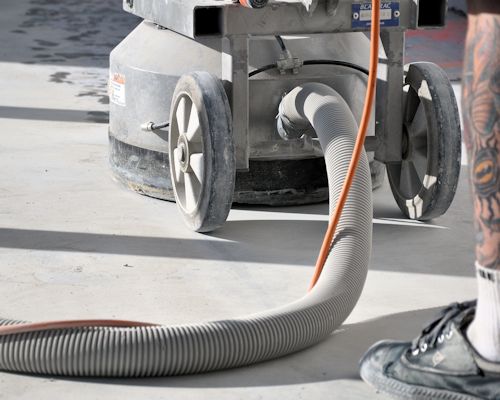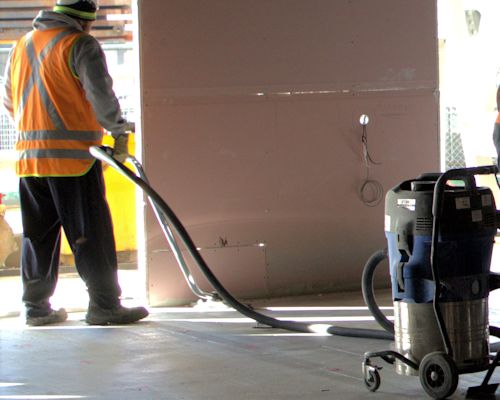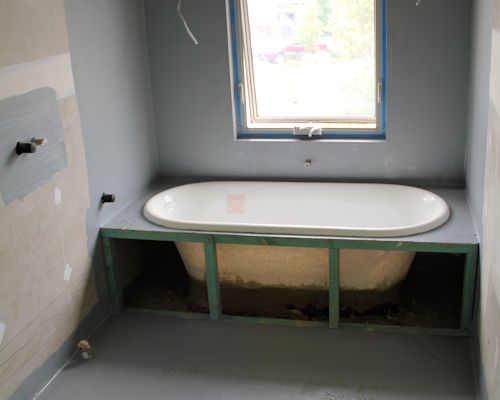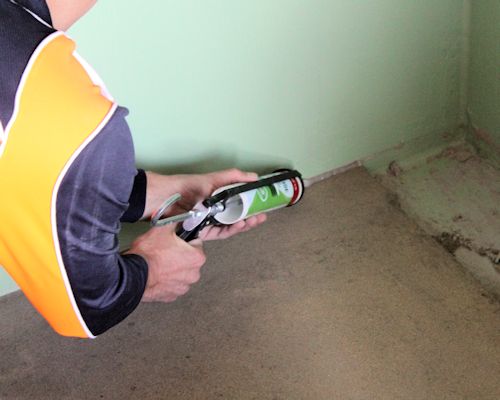Applying moisture barriers
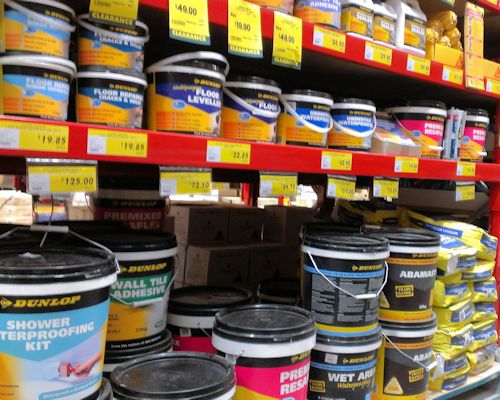 Audio for slide 1 (mp3 |6|KB)
Audio for slide 1 (mp3 |6|KB)
Because moisture control is so crucial to the success of the overall floor covering project, you should always follow the manufacturer's instructions closely.
This includes using any other products specified by the manufacturer if it forms part of an overall 'moisture barrier system', to ensure that all the products you're using are compatible and that you've satisfied their warranty conditions.

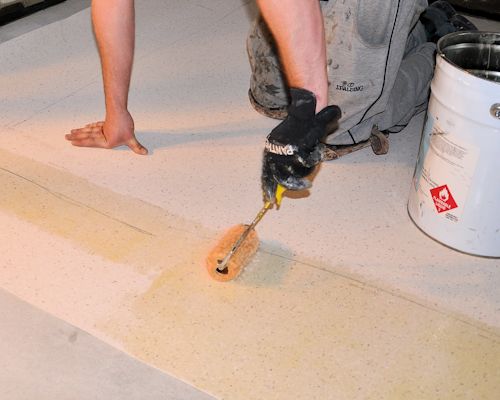 Audio for slide 2 (mp3 |6|KB)
Audio for slide 2 (mp3 |6|KB)
Even if you've put a cement-based compound in between the adhesive and the moisture barrier, you may still not stop the solvent from penetrating.
Below are the general principles involved in installing a two-part epoxy resin moisture barrier.

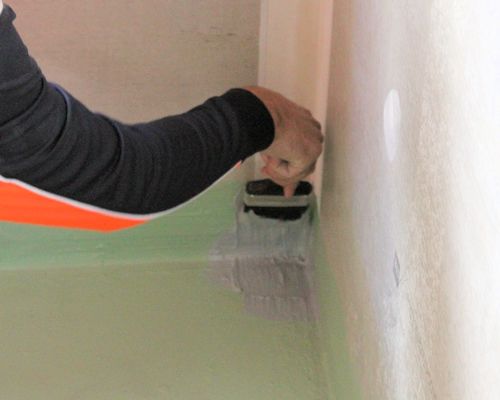 Audio for slide 8 (mp3 |6|KB)
Audio for slide 8 (mp3 |6|KB)
- Mix the epoxy and hardener components together. Apply the mixture to the floor with a notched trowel, squeegee or brush.
Make sure that the correct thickness is maintained by using the specified amount for the area to be covered.
Continue the barrier up the base of the walls to at least 150 mm above floor height.

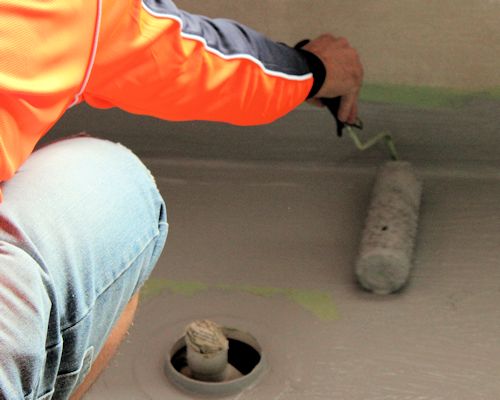 Audio for slide 9 (mp3 |6|KB)
Audio for slide 9 (mp3 |6|KB)
- Use a nap roller to roll out the product, making sure there are no pinholes or bubbles in the coating.
- Wait for the specified amount of time, and then apply a second coat at 90 degrees to the first coat.
Again, check that the correct thickness is maintained by using the quantity specified for the second coat.

 Audio for slide 10 (mp3 |6|KB)
Audio for slide 10 (mp3 |6|KB)
Cracks and expansion joints
Non-active cracks should be filled using the method recommended by the product manufacturer.
One method is to 'V' gouge the crack, prime it with epoxy resin and then fill it with a slurry of epoxy resin and Portland cement.
Active cracks - that is, cracks that could move over time and either open or close - should be noted and discussed with your supervisor to find out whether a structural engineer's advice is needed.
These sorts of cracks can result in later moisture problems and show through a finished resilient floor, so they may require specialist treatment.

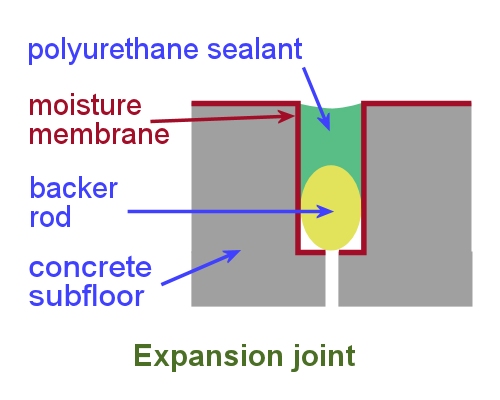 Audio for slide 11 (mp3 |6|KB)
Audio for slide 11 (mp3 |6|KB)
Expansion joints must be continued right through the moisture membrane and underlayment. One method of keeping them open is as follows:
- put a backer rod in the joint and mark its position on the walls or other fixtures at each end
- coat over the top of the joint with the moisture barrier and underlayment
- put two vertical saw cuts through the underlayment to expose the joint
- remove the material and coat the sides of the saw cut with moisture barrier
- install a jointing system recommended by the manufacturer.


Learning activity
Audio 12 (mp3 |6|KB)The link below will take you to the Altro Flooring website, where you will find information on their moisture barrier product: AltroProof Solo damp proof membrane.
AltroProof Solo Damp Proof Membrane.
Read the information on this webpage and then answer the following questions:
- What tools are used to apply and spread the membrane on the floor?
- How many coats do you need to apply?
- If you use AltroProof Solo Fast Track, how soon after its application can you apply a smoothing or levelling compound?






